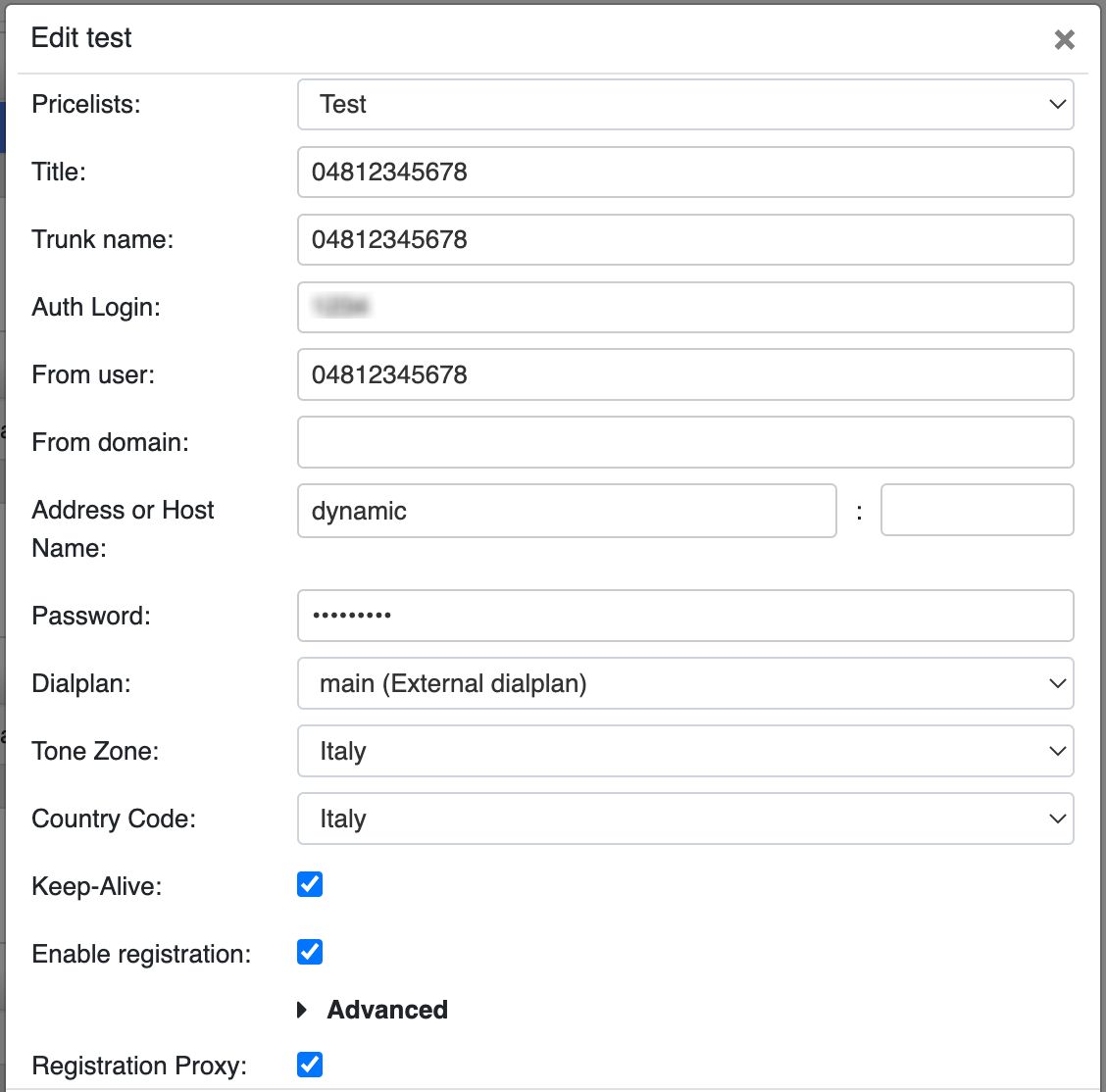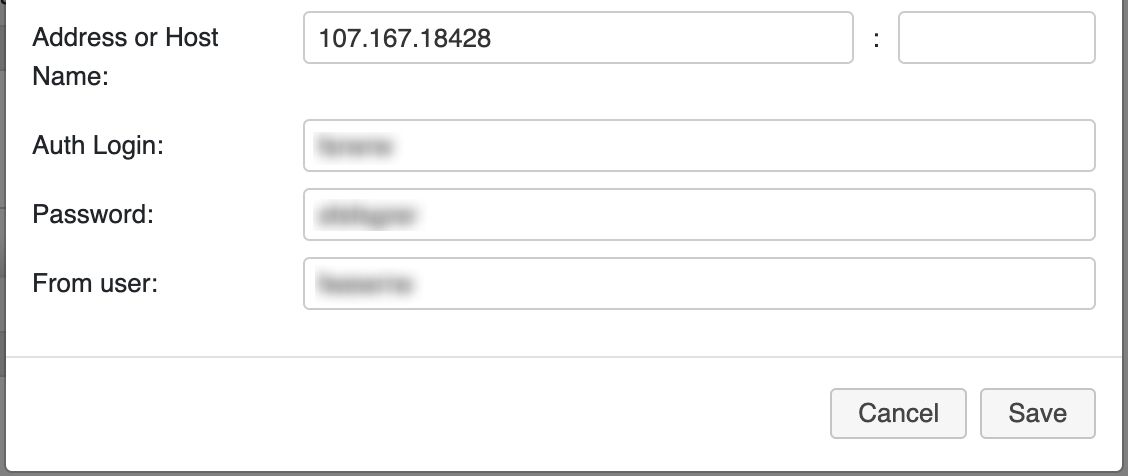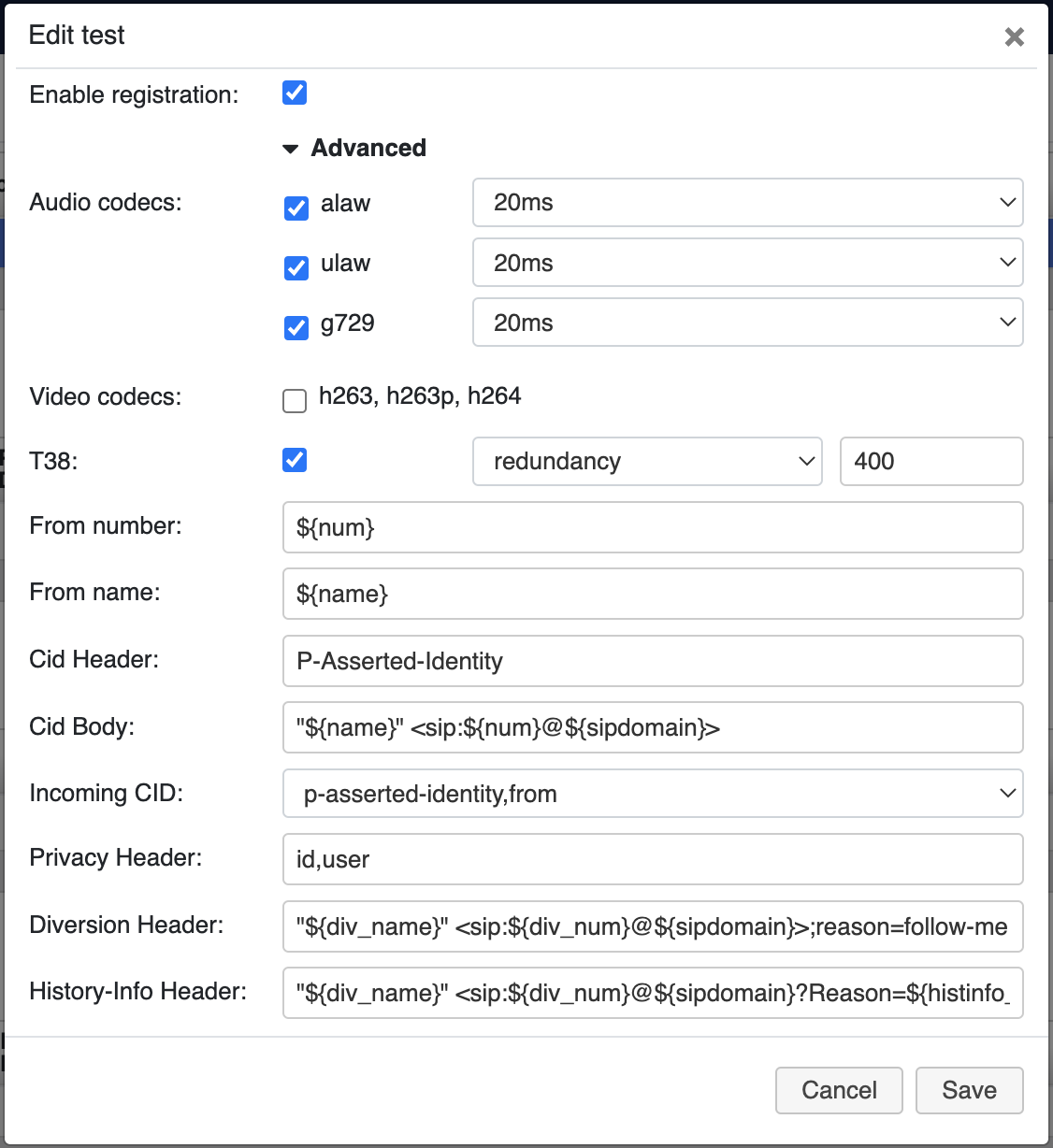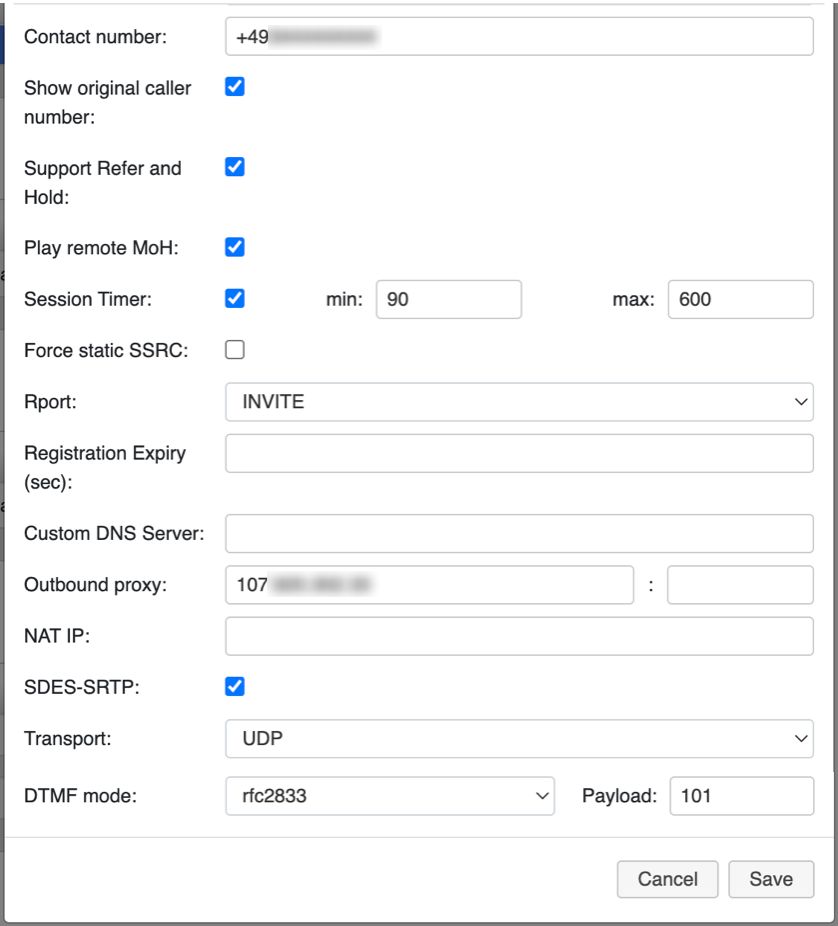| Scroll export button | ||||||||
|---|---|---|---|---|---|---|---|---|
|
| Info |
|---|
The following Admin Guide describes Trunk Settings and explains how to set up various parameters. Updated: January September 2023 WMS version: WMS 6.0X / WMS 5.0X Permalink: https://wildix.atlassian.net/wiki/x/tx7OAQ |
| Note |
|---|
BRI/ PRI Media Gateways are EOL. |
...
- Pricelist: associated pricelist for the correct calculation of calls cost (must be configured in WMS -> Trunks -> Pricelists)
- Title: description of the trunk
- Trunk name: trunk name
- Auth Login: provided by the VoIP Carrier for authentication
- From user: forced from number header and used for invite messages and for registration (if From domain is not empty), usually the same as Auth login
- From domain: forced from domain header and used in register and invite SIP messages
- Address or Host Name: address or host name of sip proxy; dynamic indicates that the trunk is used for incoming registration (incoming invites are allowed)
- Password: password for authentication provided by the VoIP Carrier
- Dialplan: Dialplan procedure for routing calls coming from this trunk (usually, “main”)
- Tone Zone: select the country/ region
- Country Code: used for number normalization, specify the code of the country where the trunk is used
- Keep-Alive: enable periodic sending of keep alive messages to the trunk
Enable registration: enable outgoing registration (in case of PBXs SIP interconnection, it is enabled on the Client PBX SIP trunk and disabled on Server)
- Registration proxy (appears after checking off Enable registration, optional): enter IP address or host name of a proxy server with the port (the default port is 5060) and credentials for access
- Advanced
Audio codecs: enable the audio codecs supported by the trunk and the ptime values: 20ms – 40ms – 60ms (20ms by default); in case a different priority is needed, use “Set” -> “Codec” Dialplan application
Note Note: The default codec priority for SIP Trunks starting from WMS 6.02.20230306.1 is the following:
- alaw
- ulaw
- g729
- Video codecs: enable the video codecs supported by the trunk
- T38: special parameters for T38 support and the maxdatagram
- From number: add an expression to set a dynamic cid number for outgoing calls based on the office number or on the value “Set” -> “cid number” on trunk Dialplan application; works only if the operator allows setting of a cid number for outgoing calls
- From name: add a regular expression to set a dynamic cid name for outgoing calls
- Cid Header: add an additional header to set the cid number
- Cid Body: indicate the contents of the cid header
- Incoming CID: setting of a specific SIP header from which Cid header must be retrieved. Available options: p-asserted-identity,from (default) / from
- Privacy Header: setting of the privacy header content supported by the operator to perform anonymous calls via feature code “Hide number” (92 by default)
- Diversion / History-Info Header: add SIP header Diversion and History-info for outgoing INVITE to trunk in order to preserve the information on the original called number in case of call forwarding
- Contact number: allows to set custom contact number in SIP trunk configuration; Note: The field is available starting from WMS v. 6.01.20221019.4
- Show original caller number: can be used by operators which support displaying any number as cid, allows displaying original caller number from trunk in case of transfers/ mobility calls
- Support Refer and Hold: allow the trunk to perform transfers and disable hold requests from the trunk
Play remote MoH: configure remote music on hold to be played instead of the local one for external calls
Warning Limitation: For the Play remote MoH settings to apply, make sure the Support Refer and Hold option is enabled.
- Session Timer: enable the check of the session validity to avoid pending calls; if enabled, the value 360secs is used, if disabled – 7200 secs
- Force static SSRC: forbid SSRC change in RTP sessions; this option is recommended for some SIP operators which do not playback RTP packets after change of SSRC
Rport: the rport mechanism changes the SIP routing behavior, so that responses can be received through a NAT even if private addresses are used in the SIP headers; available options: INVITE (default), REGISTER/INVITE, off
Warning Limitation: If PBX is behind NAT and uses trunk with rport REGISTER, INVITE, the remote side may drop calls after 30 seconds.
- Registration Expiry (sec): set the expiry time for outgoing register messages (default=600 sec / min=0)
- Custom DNS Server: used to resolve the sip proxy domain name
- Outbound proxy: all outgoing SIP messages are sent through the indicated host
- NAT IP: enable the network connection IP
- 100rel: enable reliable transmission of provisional messages
- SDES-SRTP: enable SDES-SRTP protocol for calls through the trunk
- Transport: select the transport protocol to be used: UDP/ TCP/ TLS/ auto (dns ptr-srv)
- DTMF mode: allows you to select the DTMF transfer mode: info/ rfc2833/ inband and specify the payload
...



